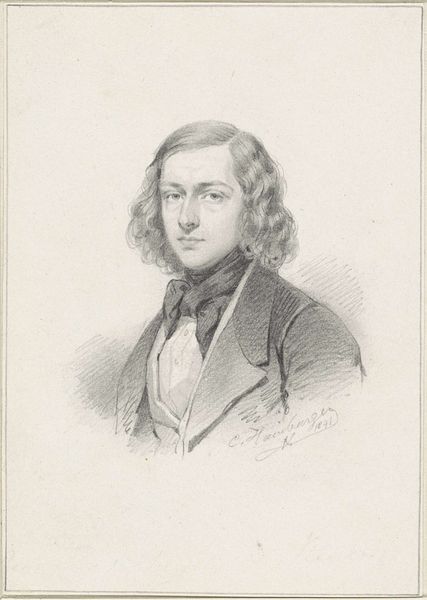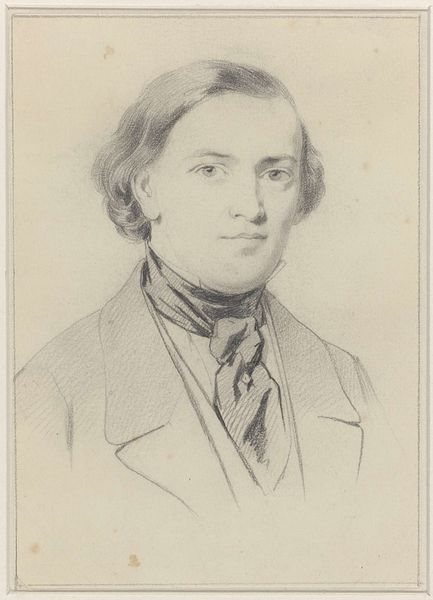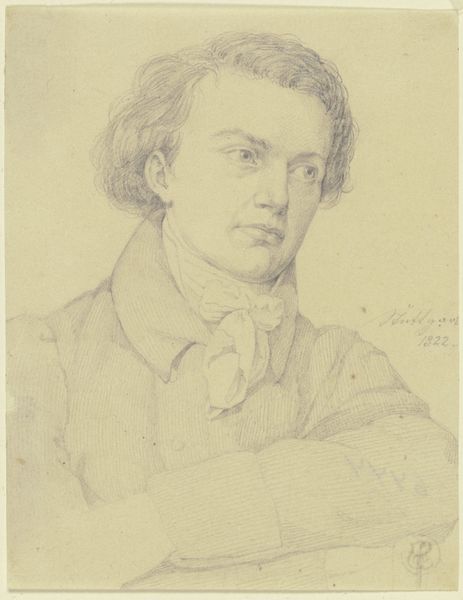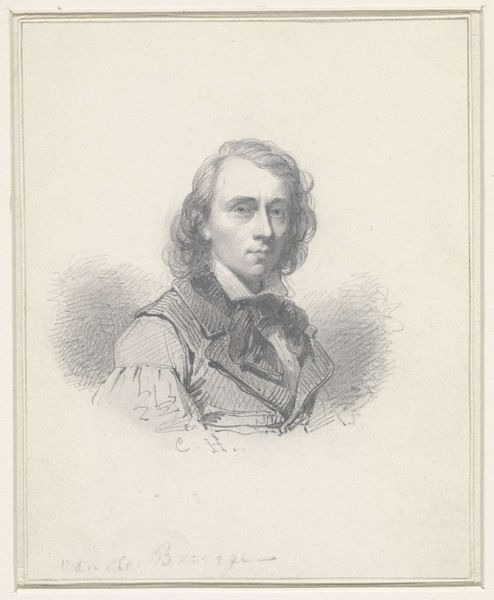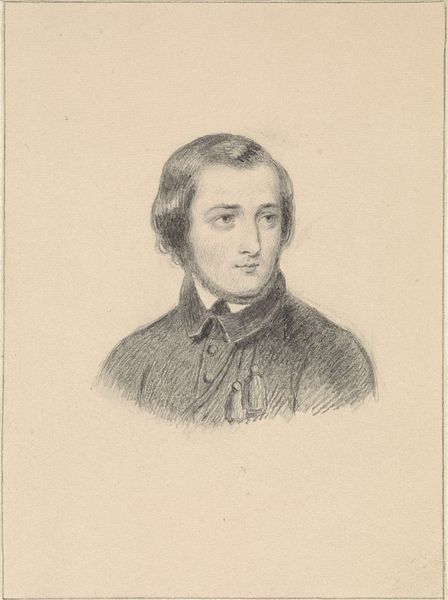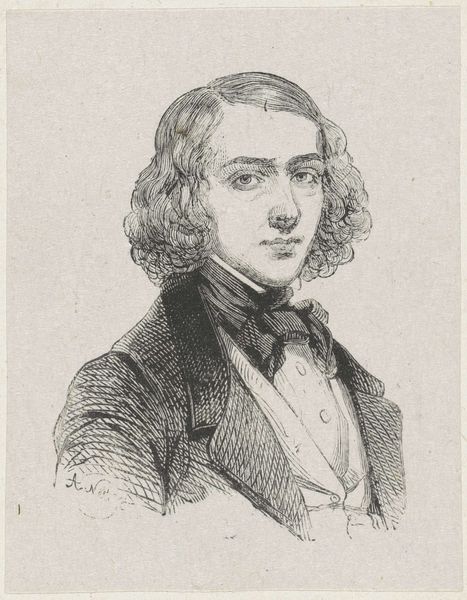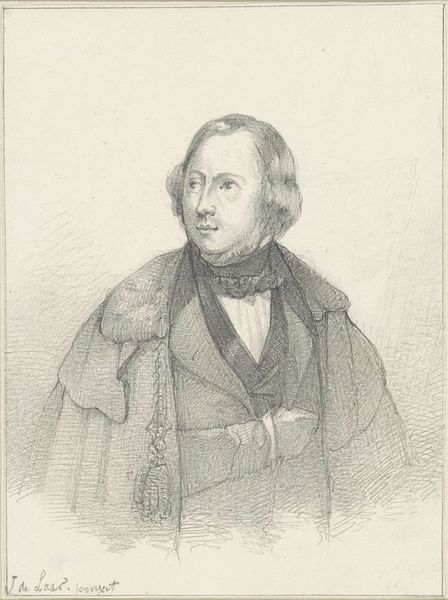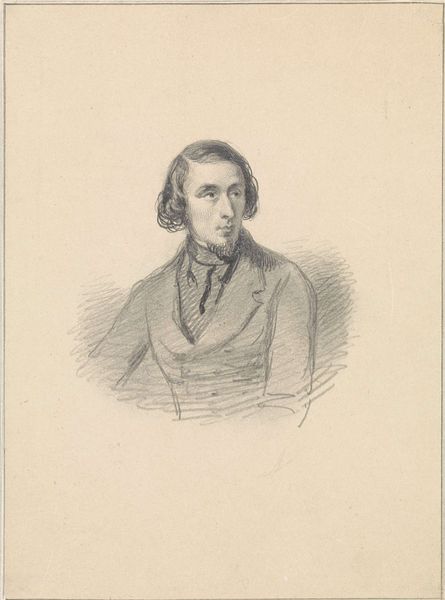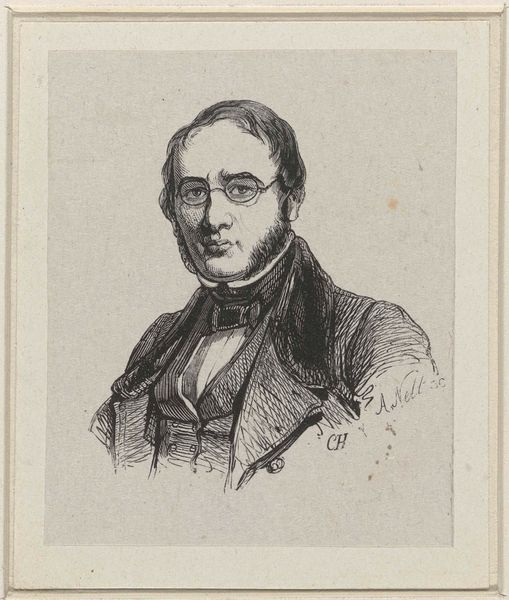
Dimensions: height 114 mm, width 89 mm
Copyright: Rijks Museum: Open Domain
Editor: Here we have Petrus Franciscus Greive’s self-portrait, rendered in pencil sometime between 1831 and 1872. The softness of the medium lends a contemplative mood to the image, don’t you think? What do you see in this piece? Curator: I see a potent intersection of Romantic idealism and burgeoning bourgeois self-awareness. Consider the context: Greive, working in the mid-19th century, is participating in a broader cultural trend. The rising middle class, empowered by industrialization, began to claim representation through portraiture. What does it mean for an artist to portray himself during this time? Editor: It’s a statement of sorts, maybe? A way to assert their place? Curator: Precisely! It’s about claiming individual importance within a rapidly changing social structure. Notice the delicate lines, the attention to detail in the clothing. This isn’t just documentation; it's a carefully constructed representation. He’s positioning himself, not just as an artist, but as a gentleman, a man of taste and refinement. Where does that put the viewer, in your opinion? Editor: Maybe… invited into his world, but also kept at a distance by the formality? Curator: Exactly. The self-portrait becomes a site of negotiation, a way to express identity and status in a society grappling with shifting power dynamics. What are your feelings about how historical power shapes individual identity in this portrait? Editor: That's fascinating, I never considered it in that light. I was too focused on the romantic aspects, the artistic skill. Curator: That’s the beauty of engaging with art, isn’t it? It’s a continuous layering of meaning, personal and socio-political. It is all one.
Comments
No comments
Be the first to comment and join the conversation on the ultimate creative platform.
